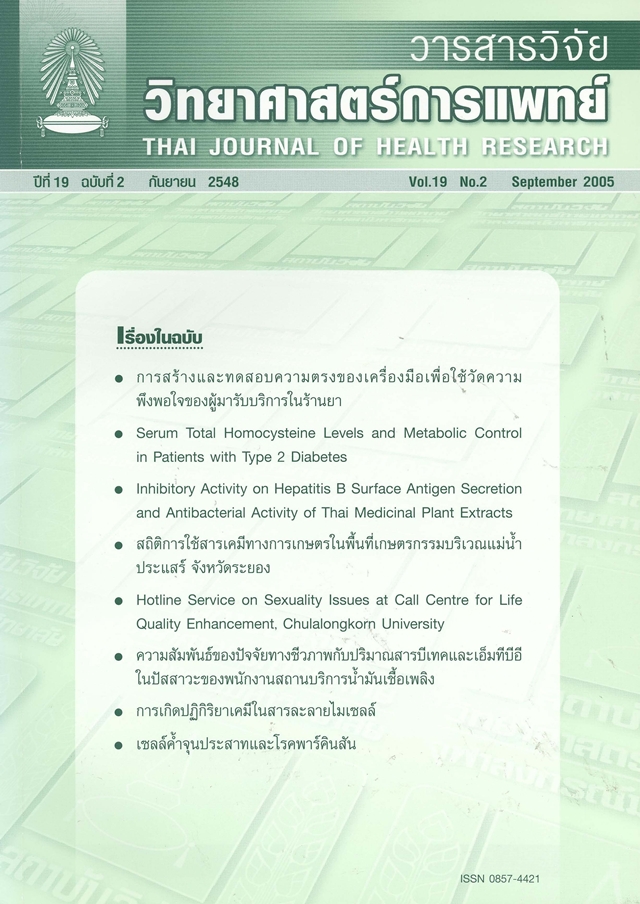Serum Total Homocysteine Levels and Metabolic Control in Patients with Type 2 Diabetes
Keywords:
Total homocysteine, Glycated hemoglobin, Type 2 diabetesAbstract
Serum total homocysteine levels (tHcy), an emerging risk factor for cardiovascular disease, and its relation to metabolic control in patients with type 2 diabetes mellitus were determined. Sample population was 135 patients with type 2 diabetes without any diabetic complications who attended the diabetic clinic at Pathumthani Hospital and 79 non-diabetics from the population in Pathumthani. Fasting blood samples were obtained in order to determine the level of tHcy, glycated hemoglobin, glucose and lipid profile. Regarding to the degree of glycemic control assessed by hemoglobin A1c (HbA1c), type 2 diabetics were defined to good or fair control (HbA1c ≤ 8.0%, n = 67) and poor control (HbA1c > 8.0%, n=68). The correlations between tHcy levels and glycated hemoglobin and lipid levels were investigated. The results indicated that serum tHcy levels were significantly higher in patients with type 2 diabetes than in the nondiabetes. Eleven percent (15 of 135) of these patients had moderate hyperhomocysteinemia (15-30 µmol/l). There were no significant differences of tHcy levels in the subgroups of type 2 diabetes with regarding to glycemic control. Amongst patients with type 2 diabetes, correlation analysis demonstrated that there was a little significantly correlation between tHcy levels and age (r = 0.39: p < 0.001) and there was not significantly correlated with both hemoglobin A1c and lipid levels. In conclusion, increased serum tHcy levels were found in type 2 diabetic patients without any diabetic complications as compared with non-diabetic subjects. Improved glycemic control did not reduce tHcy levels and there were no associations between tHcy levels and metabolic control.







